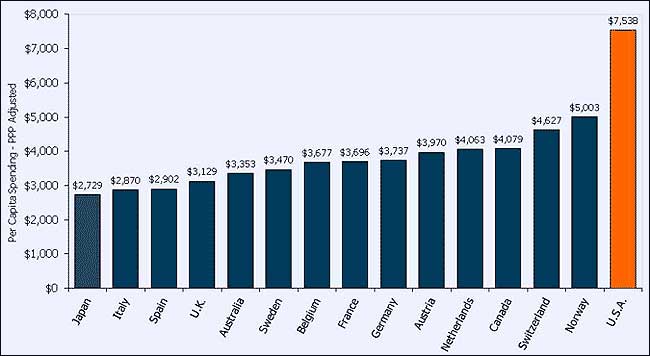But what is the cost of health insurance in America? Health insurance cost depends on several intersecting factors, including your home location and where you work.
Americans pay varying premiums every month or annually for insurance policies. This article discusses some of the common factors that influence medical insurance costs in the U.S to help you estimate how much you might pay for your selected health plan.
Factors that affect premiums
Some of the factors that affect the amount you pay for an insurance policy are beyond your control. Understanding these determinants can help you choose the right health plan that fulfills your family requirements while observing the set regulations.
You can locate a suitable health insurance plan by visiting reliable platforms to check and compare premiums. Some of the factors that affect health insurance costs include state and federal laws, which dictate how many insurance companies can charge and what services must be covered by health insurance. Another determinant is your income. Low-income earners may pay higher premiums through employers but pay less on exchanges because of subsidies.
The size of your employer can also influence the amount you pay for an insurance plan. Large-scale organizations can offer more affordable health insurance plans than smaller companies.
Similarly, insurance premiums tend to be relatively lower than in rural areas. Because your current state of residence influences your insurance plan’s total cost, conducting general research is necessary.
When researching the average cost of health insurance in the United States, note that some states permit only one insurance marketplace to operate. In contrast, others have several issuers available, allowing for competition and promoting price reduction.
Lastly, your age can affect the cost of premiums. Senior citizens tend to pay more than younger individuals due to their susceptibility to chronic illnesses, physical injuries, household accidents, etc. If you identify as elderly, prepare to incur higher costs.
Individual health insurance
Unlike those who acquire health insurance plans through union or employer sponsorship, some obtain these plans via third-party resources. If you’re interested in purchasing an insurance policy, a beneficiary should pursue an individual policy. Courtesy of the Affordable Care Act (ACA), Americans can buy individual health plans, known as ACA plans, through the designated marketplace provided under ACA guidelines. As an alternative, individuals can apply for health insurance through private insurance companies.
The cost of individual health plans often vary. Some of the factors that impact an individual insurance policy’s price include the following: your income, healthcare use, and coverage needs. To receive a reliable cost estimate of your insurance, you’ll need to understand the plan’s premiums, cost-sharing expenses, out-of-pocket limits, and deductibles.
Premiums
A recent study by eHealth on ACA plans shows that an average insurance premium for individuals racks up to about $456. For a family, it costs around $1,152. However, this cost doesn’t apply to those individuals who currently qualify for government subsidies. For a more in-depth review of these premium rates, consult with your local state health care services.
Out-of-pocket limits
Out-of-pocket limits act as a financial safety net that defines the maximum amount you have to spend on covered medical services annually. Upon reaching the maximum out-of-pocket limit, your insurer pays 100 percent of the insurance amount for the rest of the period. Note that your coinsurance, deductible, and copay costs contribute towards the annual maximum cash payment limit.
Deductible and cost
By definition, a deductible is a fraction of the amount a beneficiary must pay towards their medical services before your insurer pays its portion for the covered services. The amount for a single person costs $4,364, and that of a family costs total to around $8 439. On the other hand, coinsurance and copayments are cost-sharing expenses you must make every time you receive a healthcare service upon reaching your annual deductible.
Employee health insurance premiums
Working for a large-scale employer can attract high insurance costs. According to a 2019 Employer Health Benefits Survey released by the Kaiser Family Foundation, the annual premiums for a single-family coverage amounted to $20,576 in 2019. The total contribution of families totaled to $6,015, meaning that the employer covered 71 percent of the total premium cost. By contrast, an individual employee paid an average of $7,188 for insurance premiums.
Since workers often pay their insurance premiums using pretax dollars, it’s evident that those who opt for health insurance alternatives pay less than those who purchase their insurance plans through the state’s health insurance exchange or the federal health insurance marketplace.
In summary
Brace yourself for the impact of unexpected medical emergencies by investing in your health insurance plan. While the initial incurred cost can daunt the average middle-class family, the forcefield of comprehensive health insurance protection can relieve stress and protect a family unit from the havoc of bankruptcy.







